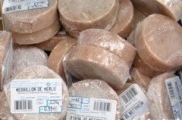Fish has and has had great importance as food for man practically since the origin of humanity.
Due to its high protein content of high quality, its fat rich in Omega 3 fatty acids, vitamins and minerals, it is considered a valuable food and at the same time, a culinary delicacy.
However, most of the foods we consume in our diet are not always available in the way they are obtained from nature, but have been subjected to different processes with the intention of improving some of their characteristics, or in order to allow its conservation to improve its suitability for human consumption.
Freezing, if done correctly, is one of the food preservation methods that produces less loss in its nutrient content.
PROPERTIES OF FROZEN FISH
The average consumption of frozen fish is close to once a week, according to the report «The purchase of frozen seafood», prepared by the Fund for the Regulation and Organization of the Market of Fishery Products and Marine Crops (FROM). Today’s way of life has made frozen foods very popular among consumers and, in particular, among those who do not have enough time to shop daily and buy fresh products.
In the case of fish, due to the circumstances of its capture or production, its low stability as a fresh product and its seasonality, freezing is one of the most widely used preservation methods in the world and the one that least alters its sensory properties and its nutritional value, which it is understood as its nutrient content and the bioavailability in which the nutrients are found in the fish.
FROZEN FISH IS LIKED FOR…
There are several reasons why many consumers choose to purchase frozen fish, from the longer life and the availability of fish at any time to improvise a meal, to the cheaper price or the guarantee of its correct nutritional value.
- Long useful life. Frozen fish is kept and preserved for months in perfect condition, which allows you to make purchases sporadically. At the same time, having fish as a «freezer essential» solves an unforeseen situation.
- Wide range of fish types. Today you can buy almost any type of frozen fish: hake, emperors, monkfish, cod, grouper, conger eel, sole… This variety allows you to prepare countless dishes and make the diet more varied and balanced, as well as being a solution to prepare a fast meal.
- Formats and cuts for all tastes. The fact that it comes in different shapes and cuts (fillets, slices, loins, fishcakes, tails, sticks…) and that it hardly has bones, is an added value of these foods.
- Good price. Frozen fish purchased in bulk is generally cheaper than fresh. In addition, it has no waste, since it is prepared so that it can be cooked without having to clean it.
- High nutritional value. Freezing maintains the nutritional value of the fish and prevents the growth and development of bacteria, as long as the cold chain is not broken, that is, if adequate freezing temperatures are maintained from when the fish is frozen until it arrives at home. This way, both the high biological value of its proteins and the amount of unsaturated fatty acids, including omega-3, vitamins and minerals, are preserved. Despite this guarantee, only one in four consumers buys frozen fish because they consider it to be a healthy product, according to the results of the FROM report. In other cases, they buy it because they like it, because it is a solution for a fast meal or it serves as a base for the preparation of other dishes.
To achieve all these advantages, after buying frozen fish, it is advisable not to break the cold chain from the establishment to the home. It is appropriate to transport it in a thermal bag.
Full Original Article: Properties of Frozen Fish (Las propiedades del pescado congelado) in Consumer (the magazine for responsible consumers). NOTE: Original article is written in Spanish.


